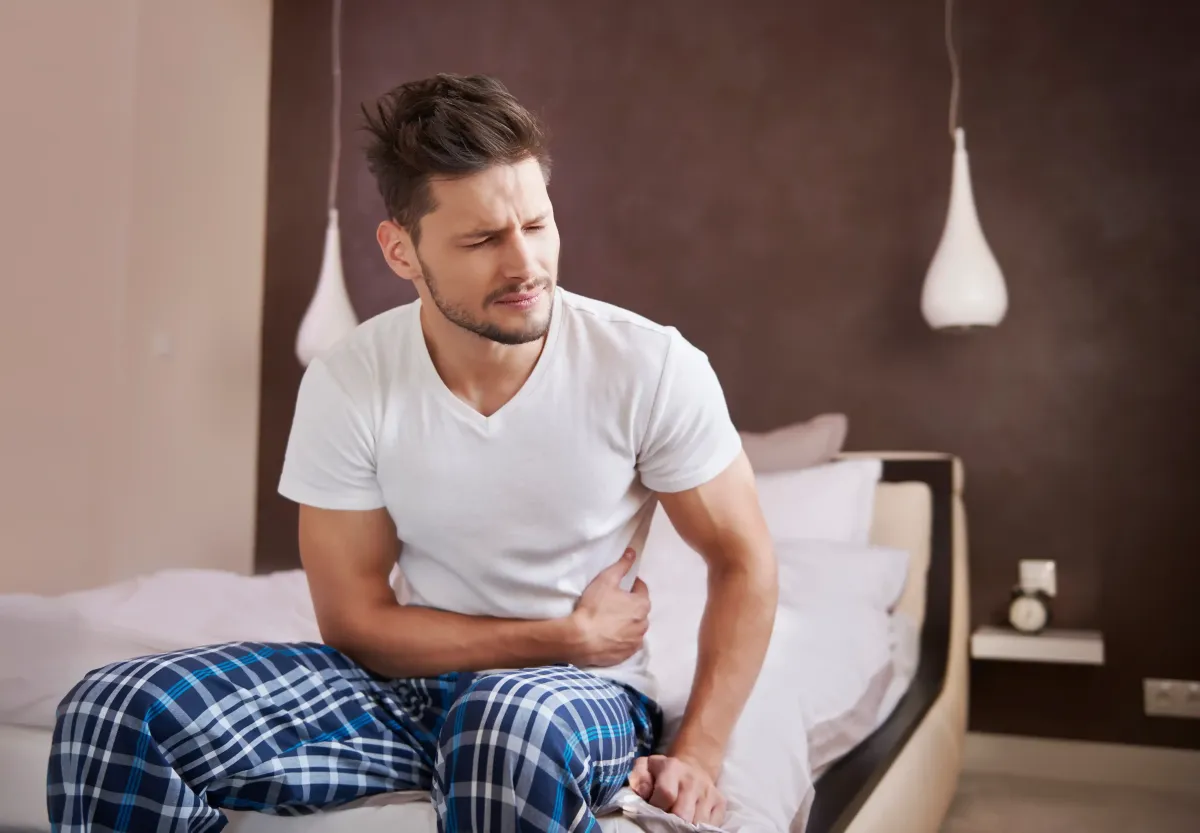Groin Pain Treatment in New Jersey
Clifton Physical Therapy

What is a Groin Strain?
A groin strain happens when the muscles along your inner thigh or front of the hip are overstretched or torn. These muscles—known as the adductors—help you bring your legs together and stabilize your movements when walking, running, or lifting. When they’re injured, even simple tasks like walking or lifting your knee can become difficult and painful.
Groin strains can result from sudden, forceful muscle contractions or from repetitive overuse, especially in activities like soccer, football, or dance. Everyday movements, such as slipping on a wet floor or lifting heavy items, can also cause injury.
Depending on the severity, groin strains are categorized into three grades:
Grade 1: Mild stretching or tearing of a few fibers. Pain and tenderness are present, but strength remains normal.
Grade 2: Partial tearing with moderate pain, swelling, and weakness. Limping is common.
Grade 3: A severe or complete muscle tear, often accompanied by bruising, swelling, and a “popping” sensation. Walking becomes extremely difficult.
How Does a Groin Strain Feel?
The most noticeable sign of a groin strain is sharp pain in the inner thigh or lower abdominal region. Some people feel a sudden pull or snap, followed by discomfort that can range from a dull ache to stabbing pain when moving the leg.
Mild strains may cause only slight tightness or soreness that worsens with sudden leg movements such as sprinting, cutting, or kicking.
Moderate to severe strains can cause weakness, tightness, or spasms in the groin muscles, especially when lifting the leg or bringing the knees together.
In severe cases, the pain can be intense enough to prevent weight-bearing altogether.
Because groin muscles play a major role in walking, running, and balance, the pain often interferes with daily life—making it hard to climb stairs, exercise, or even stand for long periods.
What Are the Common Risk Factors?
Groin strains can affect anyone, but certain factors increase the likelihood of injury. These include:
Previous groin injury
Male gender
Hip muscle weakness
Overtraining or poor warm-up
Tight hip flexors or inner thigh muscles
How Is Groin Pain Diagnosed at Clifton Physical Therapy?
Our physical therapists begin with a detailed assessment of your medical history, activity level, and symptom pattern.
We may ask:
What were you doing when the pain started?
Did you feel or hear a pop at the time of injury?
Where exactly is the pain located?
Do certain movements—like lifting your leg or walking—worsen your pain?
A hands-on examination follows, where your therapist gently moves your leg, checks your muscle strength, and palpates the groin area to identify the injured site. These assessments help determine the grade of strain and rule out other conditions, such as hip joint issues or hernias.
If needed, we may coordinate with an orthopedic specialist for imaging studies like X-rays or MRIs to confirm the diagnosis and rule out other causes of pain. However, most groin strains can be accurately diagnosed through physical evaluation alone.
How Is Groin Pain Treated?
Our approach to groin pain treatment focuses on safe recovery, pain reduction, and restoring full mobility. Every patient’s plan is customized based on the grade of the strain and their activity goals—whether that’s returning to sports, exercise, or normal daily function.
1. Pain and Inflammation Management
During the initial stage of recovery, rest and gentle care are essential. Your therapist may recommend applying ice packs several times a day to reduce swelling and tenderness. In some cases, gentle compression and elevation can also help limit inflammation. We focus on minimizing pain before introducing strengthening exercises.
2. Restoring Flexibility and Mobility
Once pain begins to subside, we help you regain your range of motion with guided stretching and gentle movements. Controlled mobility work ensures that the injured muscle fibers heal without excessive stiffness or scar tissue formation. Restoring flexibility early helps prevent future strains.
3. Strengthening the Muscles
Building strength is key to preventing re-injury. Your therapist will design a targeted exercise plan that focuses on both the adductor muscles (inner thighs) and hip stabilizers. Strengthening surrounding muscles helps balance your movement patterns and reduce strain on the affected area.
4. Gradual Return to Activity
As strength and flexibility improve, our therapists guide you through sport-specific or functional training to ensure a safe return to normal activity. This step is critical for athletes and active individuals to regain confidence in movement without the fear of reinjury.
5. Manual Therapy and Modalities
We often incorporate hands-on treatments such as soft tissue mobilization, myofascial release, and gentle stretching to relieve tension and promote circulation. Depending on your condition, advanced modalities like ultrasound therapy or electrical stimulation may also be used to accelerate tissue healing.
What Exercises Help with Groin Strain Recovery?
Therapeutic exercises play a central role in groin strain rehabilitation. These movements strengthen weakened muscles and improve flexibility, helping you return to pain-free function faster. Below are some of the exercises we often include in treatment plans at our clinic:
Hip Adductor Stretch
This stretch targets the inner thighs and helps reduce tightness.
Lie on your back with both knees bent.
Press your feet together and let your knees gently fall open to the sides.
Hold for up to 30 seconds, then return to the starting position.
Repeat three times.
Lateral Lunge
This dynamic stretch strengthens and lengthens the adductors.
Stand with feet shoulder-width apart.
Step wide to the right, bending your right knee while keeping your left leg straight.
Push back to the starting position.
Do 2 sets of 15 repetitions per side.
Straight Leg Raise
This exercise builds thigh strength without stressing the injured area.
Lie on your back with legs extended.
Bend the uninjured knee, keeping the foot flat.
Tighten the thigh muscles of the injured leg and lift it about 8 inches off the floor.
Slowly lower back down.
Do 2 sets of 15 repetitions.
Side-Lying Hip Adduction
This move targets the groin and improves overall leg control.
Lie on your side with your bottom leg straight.
Bend the top leg and rest it in front with the foot flat.
Lift the bottom leg upward slowly, then lower it.
Repeat 2 sets of 15 repetitions on each side.
Your physical therapist will adjust the difficulty and intensity of these exercises as your recovery progresses. It’s important not to rush—gradual strengthening ensures proper healing and minimizes the risk of reinjury.
What Research Shows — Benefits of Physical Therapy for Groin Pain
Research from randomized trials, systematic reviews, and clinical guides consistently shows that active, targeted physical therapy gives real, measurable benefits for people with groin (adductor-related) pain. Below, we summarize the main findings from the literature.
1. Faster and more complete recovery with active exercise programs.
Multiple trials and reviews report that progressive exercise programs focused on adductor strengthening, core stability, and load management shorten symptom duration and improve function compared with passive care alone. Patients who follow a structured strengthening and return-to-load plan get back to sport and daily activities sooner.
2. Targeted adductor strengthening reduces recurrence.
Controlled trials (and prevention studies in team sports) show that programs which specifically load the adductor muscles — including eccentric and high-load exercises — lower the risk of reinjury when performed consistently as part of preseason and in-season training. The Copenhagen adductor exercise and other progressive adductor programs are frequently cited examples.
3. Active rehab (exercise + load progression) is superior to passive modalities alone.
Systematic reviews indicate moderate evidence that active protocols (exercise, progressive loading, motor control work) produce better outcomes than passive-only treatments (rest, passive modalities) for long-standing groin pain. That does not mean hands-on care has no role — it means exercise is the treatment core.
4. Manual therapy and multimodal approaches help persistent cases.
For chronic or long-standing groin pain, combining manual therapy (soft-tissue techniques, myofascial release) with a progressive exercise plan improves pain, range of motion, and patient satisfaction in several trials and case series. Individual response varies, so clinicians tailor the mix to the person.
5. Clear return-to-play / activity criteria and supervised progression lower re-injury risk.
Recent consensus and clinical studies emphasize criteria-based progression (strength, pain-free sport-specific drills, psychological readiness). Athletes guided through graded loading and objective strength measures have safer, more reliable returns to sport.
Community Insights on Groin Pain Recovery
“I have experienced groin pain. My pain is related to a combination of total hip replacement (left hip) and a hysterectomy… I strain the groin area usually on the left side and it hurts for a while then goes away. I've had pelvic floor physical therapy with recommendations for stretching that help with all of this.” — From Mayo Clinic Connect discussion
“I had a front groin/hip flexor strain, and my PT felt that my quads lacked elasticity, so she had me doing quad stretches and foam rolling to make it more resilient (note: NOT to lengthen). That worked for me.” — From Reddit: AdvancedRunning thread
“After taking your advice I have been seeing a private physiotherapist which has helped me get back to a level of normality. The dull pain in my right groin has all but gone and I have just started to return to running very slowly.” — From PhysioBase community forum
Call us at (973)-241-1338 to book your appointment today.
What others are saying
"I recently had ankle surgery and Clifton PT has been nothing short of amazing! My goal was to get back to playing soccer as quick as possible before the college season started and so far I'm right on track. Izzy, Bianca, Tiff, and John have gone above and beyond to make sure I'm back to 100%. Couldn't be more grateful to be treated by the best team ever!." - Nat Rufino

All the therapists at Clifton Physical Therapy are awesome, but I spend most of my time with Izzy and Bianca—and they’ve been amazing. They’re enthusiastic, knowledgeable, and always take the time to explain what I’m doing and what my issues are. Their positive energy and clear communication make a big difference in my recovery." - Bryan Tompkins

"Going Clifton physical therapy was one of the best thing that came out of my back pain! Every single staff member is amazing and cares for your recovery! I have been with them for the past couple of months and now continuing their workout program! I can’t recommend them enough! Tiffany, Izzy, Bianca and everyone else I have worked with there! Can’t rave about them enough!!." - Monica Mehta

"Clifton Physical Therapy has been a great place for me to heal my meniscus tear. The staff is very knowledgeable and friendly, and has been extremely helpful in guiding me through my recovery. I highly recommend their services.." - Kelly Bevando

Clifton Physical Therapy
✆ Phone (appointments): (973)-241-1338
Address: 1059 Bloomfield Ave, Clifton, NJ 07012
